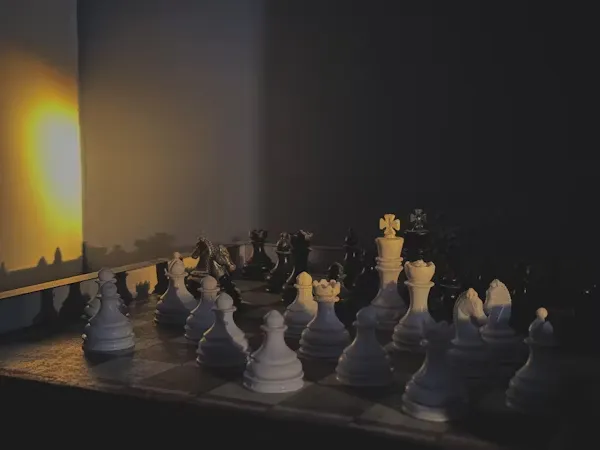It is nice to have you back in our chess class. We have been looking at topics under the second series, the intermediate guide to chess mastery. With the lesson outline, we have looked at nine lessons, from the introduction to the series to knowing when to pull simple tricks. If you missed any of the lessons and want to catch up, you can check my blog. And now let's look at simple chess endings to know. Chess is a game that is divided into three (3) stages, namely: Opening Middlegame Endgame The Opening is the beginning of the game, the first 10 to 15 moves, and this is where opening principles come into play. The Middlegame is the stage where the pieces have been moved from their initial square and are ready to fight. I spoke about ideas that can be deployed in this stage in Lesson 3 - What to play in the Middlegame The Endgame is the ending of the game where few pieces are on the board. Some chess games may not get to this stage because they ended in the middlegame, but games that get to this stage require precise knowledge and understanding to win, and we will look at a few. King and pawn endings tend to come with a peculiar understanding of how to play them. For a king and pawn ending like the one in the above position, what you should be looking for is placing your king in front of the pawn, and in this case, if you are playing as white. What you want is opposition against the opponent's king, and in the long run, to gain control of the e7 square. In endings like this, it can only end in a draw as the black king only has g8 and h8 squares to keep moving on to make it a draw. This is because of the position of the pawn; pawns at the edge give a limitation to what that side can do with the pawn. The idea is to keep playing your king between the g8 and h8 squares and make sure you always have h8 as a square you can run to. Rook endings are one of the endgames that require you to play with knowledge. Cut of the opponent's king with your rook so they don't come close to your pawn or worse oppose it by staying on the pawn's promoting square. Use your king as the defender for the pawn while you push the pawn to promotion. When your pawn is one step from promoting into another piece, step your king away and make sure you keep your rook close by. There are tons of endings out, so I can't cover them all in one post, but I strongly suggest taking Lichess practice on endings using this link below That is a wrap for now, and I hope to see you in the next lesson. I am @samostically, I love to talk and write about chess because I benefited alot from playing chess and I love writing about chess. ♟♟♟♟♟♟♟♟♟
1. King and Pawn Ending
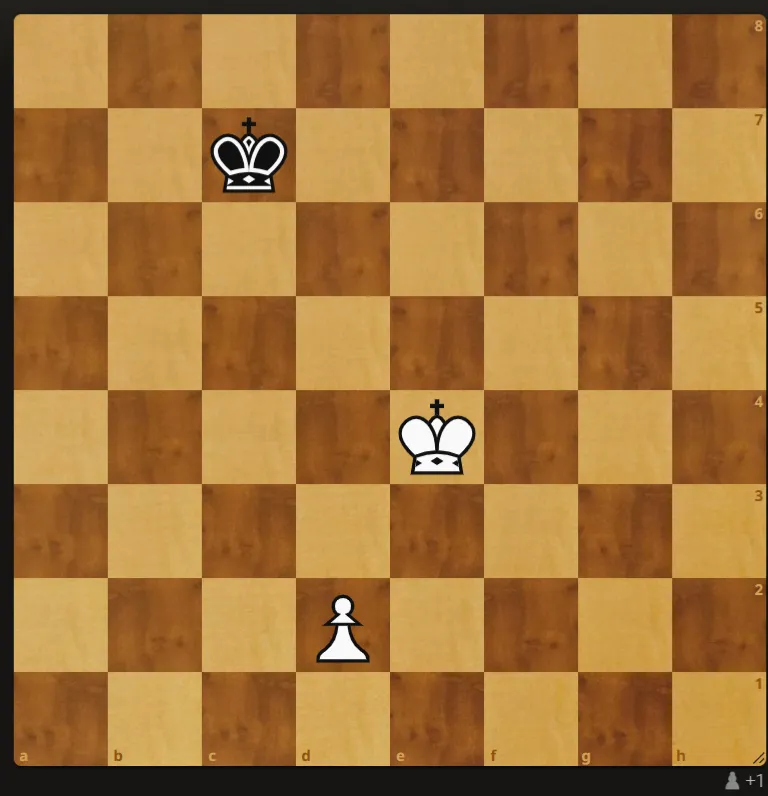
This is what you want to have in the end.
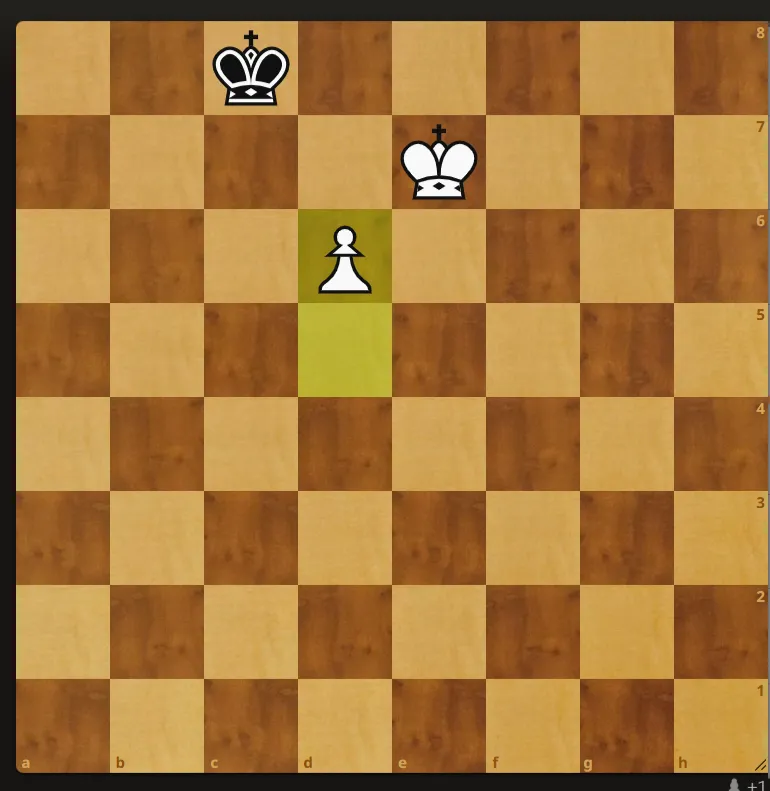
2. King and Pawn Ending, when the pawn is at the edge of the board

What the ending should look like
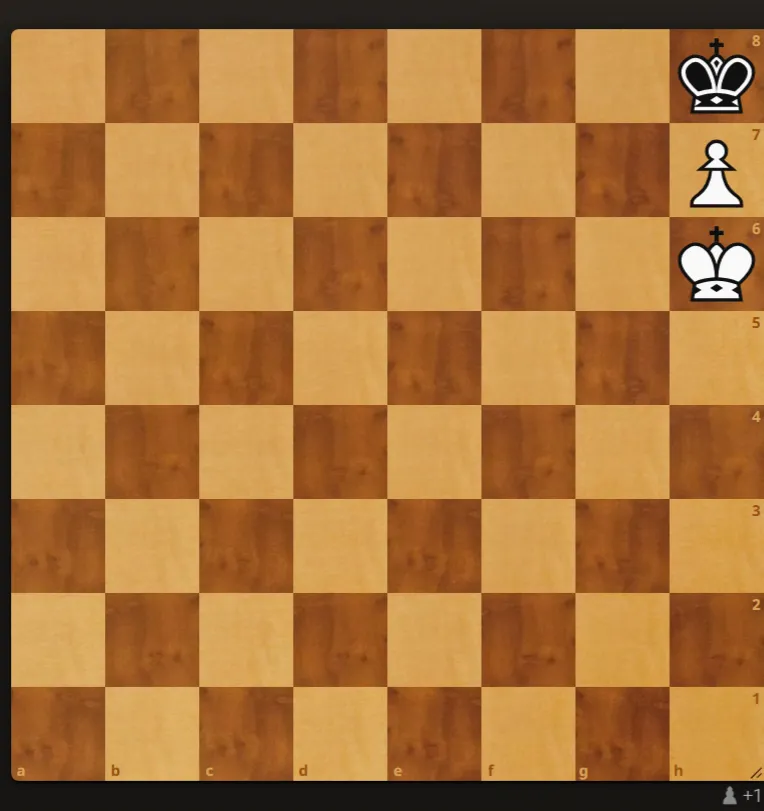
3. Rook Endings
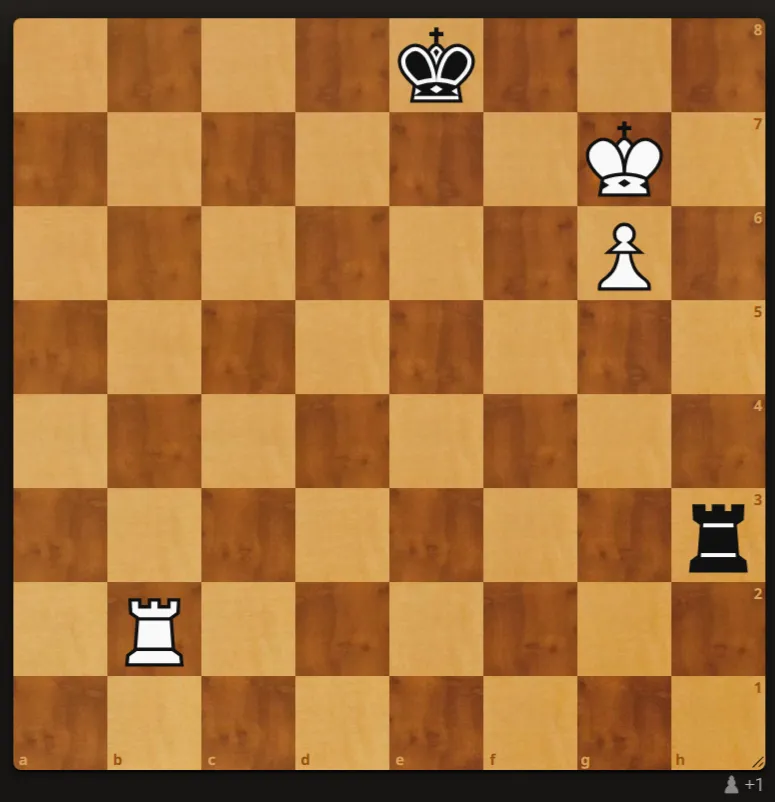
Knowing when to cut off the king and how to create space for your king. Most rook endgames end in a draw, and if it is only the rooks on the board, it is simply a draw. But the presence of a pawn for either side changes the course of the game, like the above position. If you find yourself in a position like this and you are the one who is up a pawn, this is what you should do:



